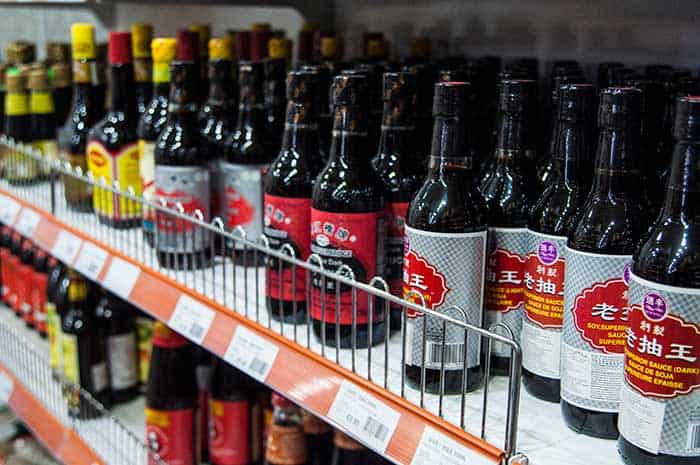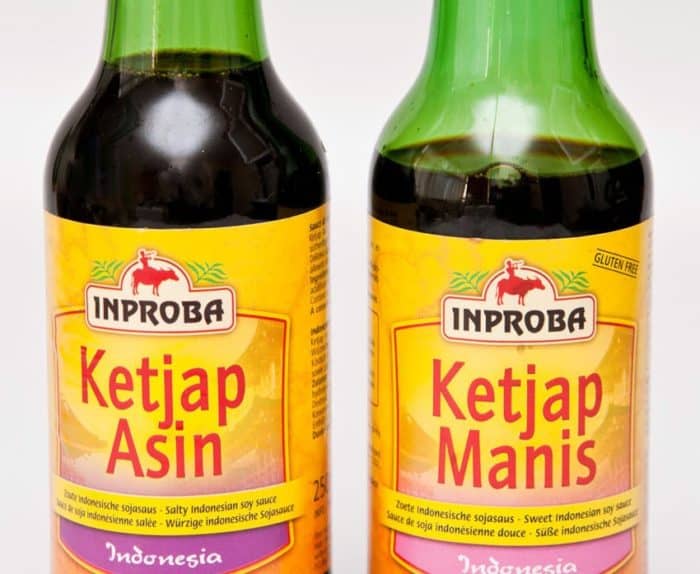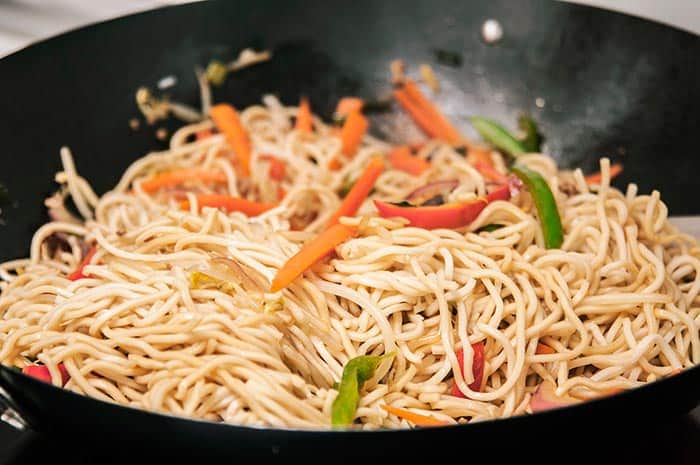Soy sauce: everything you need to know
Our culinary culture starts at home, so if you grew up in a country of Western culture, as it was my turn, it is logical that your first years of life have been fed with food from the West belonging to your country.
Now think about this: for more western food that you love, it is impossible that in your life you have not entered some Asian food , even a minimum of Chinese rice. I'll go further ... I'm 99.99% sure that if you stop for a second this reading to peek into the pantry of your kitchen, you'll find there - because yes- soy sauce , one of the ingredients Supreme supreme of oriental food! And you will say, "but if I do not know how to cook anything at all, I only go to the Chinese restaurant on the corner and that's it". I believe you, you do not cook noodles on Sundays but you have an inevitable bottle of soy sauce between your condiments. Good point, right?
Is that the soy sauce or soy , is the eastern ingredient adopted by excellence in many Western culinary cultures. And what good has been coupled !, but as an adopted ingredient that is, we may not always use it correctly. You have a precious treasure in your kitchen coffers, do you know how to use it? If you want to know what you are doing well or not so well with soy sauce, read on.

Myths and truths about soy sauce
Oh, myth 🙁 - Soy sauce is almost the same as English sauce.
Oh, right 🙂 - The only thing soy sauces share And English is that they are condiments in the form of sauce, that's all. For the rest, they were born in different countries and their ingredients, textures, colors and flavors are different. The soy sauce is ancient, a very ancient invention of the Chinese when they discovered that the product resulting from the prolonged fermentation of soybeans with wheat brought an amazing flavor to the food. On the other hand, the Worcestershire sauce is just a baby at the side of soy sauce, because it was born less than two centuries ago when the British colonized India. It could be said that in fact both kinds of marinade have an Asian kinship, but the base component of the English sauce is the vinegar fermented tamarind, together with pepper, anchovy, onion, garlic, cloves, molasses and ... some sauce soy. Perhaps the effort to confuse one with another is due to the fact that soy is involved in both types of sauce and, therefore, in certain cases similar culinary uses are attributed to them.
My recommendation : Unless you're practicing biological experiments, never, but never, mix soy sauce with Worcestershire sauce. Although they are compatible, each one has its special seasoning point that you will be able to taste if you use them individually, and rightly so, in your dishes.

The sauce Soy is not the same as Worcestershire sauce
Oh, myth 🙁 - Soy sauce there is only one.
Oh, right 🙂 - Although the first soy sauce in the world was produced in China, it lost the title of "very original" when native versions appeared in other countries Asians who knew how to cultivate the original recipe in their own way and thus created new types of sauces. The variety is immense.The greater the degree of fermentation of the soybean, the greater the complexity in density, color and derived flavors.
Thus we have that the Chinese sauces are classified in salty whites , usually of strong taste to season and season food directly, and in dark less salty , usually of a mild taste to prepare bases of stews and broths. But, eye, the intensity of the color does not indicate how little or very salty it can be a soy marinade, since it is possible to get clear sauces low in salt.
On the other hand, for the Japanese the sauce Soy is the Shōyu and has more than ten genera, the most common being the Koikuchi dark, the Usukuchi soft, the Amakuchi sweet, the Gen'en low in salt and the Tamari without wheat. Other varieties are the Kecap Asin salty and the Kecap Sweet Manis from lndonesia, as well as the Ganjang from Korea and the Toyo from the Philippines, just to mention a few, because the list itches and it spreads throughout the regions of Asia, and is also enriched by other great soy-based sauces such as Hoisin.
Even in Latin America you can find soy sauce as an important ingredient of the typical gastronomy of a whole country! Such is the case of Peru, where this dressing is known as Sillao , and it is used in endless preparations both homemade and in traditional restaurants.

Indonesian soy sauce
Oh, myth 🙁 - All soy sauces are harmful to health.
Oh, right 🙂 - To get real sauce from soybeans, the grain of this vegetable needs months and even years of educated fermentation. It is in itself a slow chemical process that the food industry managed to reduce in time and money, decomposing by the action of water (hydrolysis) processed soybean meal. This is the so-called chemical soy sauce , artificially made without any fermented and sweetened method to intensify its flavor, so it will always be saltier and with a rougher flavor than a traditional sauce. Do not buy or consume this product, it is a potential enemy of our health because it has not been processed naturally and, on top of that, it increases the salt levels of our food more than desired. To banish it, keep this in mind: if the soy sauce is fermented, there is nothing to fear. How to know if a soy sauce is chemical or not? Read the labels with a magnifying glass, looking for phrases such as "traditionally brewed soy sauce" or "traditionally prepared soy sauce", and discard all those that indicate "3-MCPD" and "1,3-DCP".
My recommendation: By law, Japan is prohibited from manufacturing or distributing unfermented soybeans, so the Shōyu Japanese will always be reliable. But if you are a purist and want to opt for the most natural way possible, you can also make your own homemade soy sauce! ! Use it sparingly.

Unprocessed soybeans
Oh, myth 🙁 - Soy sauce is just for cooking Asian food.
Oh, right 🙂 - Go back and remember why You had soy sauce among your condiments, even though you did not know everything you know about it now. Remember that you used it to make memorable recipes, not necessarily Asian, like this extraordinary baked chicken , or to dress or highlight flavors in your daily diet. Soy sauce is literally in our daily bread, no matter in which country the food is served. To honor its oriental origin, you can already venture freely to try soy sauces of any nationality in the preparation of these tasty Asian dishes:
- Chinese rice
- Tagliatelle with vegetables and mushrooms
- Tagliatelle with pork
- Singapore-style rice noodles
- Rice noodles sauteed with soy
- Eggplant with honey and soy
- Shrimp in satay peanut sauce
My recommendation: Be the protagonist of soy sauce in the magic of seasoning and highlighting the flavors of your food, but use it in moderation. Yes, it produces addictive fascination because she alone has the ability to make us feel the sweet, the salty, the bitter, the acid and the umami, the so-called fifth flavor that activates a prolonged delight in our palate. But not everything you have to put soy sauce to be exquisite, not even to the Asian food itself. Give it your time and space, you will see that you will not overshadow other flavors and that you can enjoy much more of This fabulous seasoning.

Tagliatelle with vegetables and mushrooms
You already know it. Soy sauce is not the same as English sauce, on the contrary, it includes a parallel universe with an infinite variety of sauces as numerous as Asian countries located on the world map. None of these sauces will kill anyone if it is ingested after verifying that it has been fermented and not chemically synthesized and, very important, if it is not consumed in liters. Heed your culinary intelligence , we all have it, and recognize when we overdo it or when we should not add soy sauce to all the foods we get for life. Take advantage of the rich versatility of this product, already irreplaceable of universal gastronomy.
Comments
Comments


